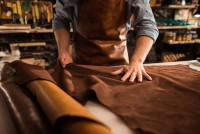This is also a help when fat causes "sloppy" hair in Hair Saving processes. Excessive fat can also cause drawn areas in the limed pelt where fat or the insoluble calcium soaps formed has prevented equal penetration of the liming. In the case of small skins with high fat content e.g. sheep skins from New Zealand, Australia and England etc. the process will depend on if the skins are being sold in pickle or processed in wet-blue. If the skins are to be sold in the pickle generally the amount of degreasing carried out is only enough to keep surface clear. Some processors use little or no surfactants at all in their process however it is recommended to use a surfactant in the delime and bate. The bulk of the fat is left in the pickled skin to be removed later in the subsequent wet-blue process. If the skins are to be processed to wet-blue straight through, then generally aqueous degreasing will be done at the delime and bate stages. Solvent degreasing is normally performed after pickle.
Type of preservation - Variation in structure between cow / ox hides and from breed type. Also geographical origin variations TFL's strategies to overcome natural fat are adapted to each individual type of hide or skin.
The difference in structure between cow and ox and between certain breeds etc. must always be taken into account when considering the end leather type requirements and this is no different when fresh hides are being processed. This variation extends also to geographical origin. Hides or skins from Australia or New Zealand are generally more fatty than a similar breed from Europe and very much more fatty than typical breeds from Asian countries.
Some types such as Zebu may exhibit a particularly loose fibre structure. This generally less tight structure normally expected from certain stock may be optimised by gentle liming with swell regulating liming auxiliaries such as ERHAVIT after a mild soaking with PELLVIT KAB-P enzyme soaking agent. Very fatty stock may be optimally processed with a selected BORRON surfactant or with a lipase containing enzymatic agent like BORRON DL.
Procesos
Industrias
- Garment
- Upholstery
- Automotive
- Shoe


 Automoción La sostenibilidad y la producción respetuosa con el medio ambiente, se han convertido en criterios importantes para los fabricantes de automóviles, sin embargo, las definiciones varían. Uno de los resultados es que los coches más livianos podrían reducir las emisiones de CO2 y de efecto invernadero. Tome el camino hacia la reducción de peso con los productos químicos TFL para cuero automotriz.
Automoción La sostenibilidad y la producción respetuosa con el medio ambiente, se han convertido en criterios importantes para los fabricantes de automóviles, sin embargo, las definiciones varían. Uno de los resultados es que los coches más livianos podrían reducir las emisiones de CO2 y de efecto invernadero. Tome el camino hacia la reducción de peso con los productos químicos TFL para cuero automotriz.
 Tapicería Las pieles de cuero para tapicería deben ser tan versátiles como sus productos finales. Blanda, lisa con un agradable tacto suave, resistente a la suciedad con perfectas capacidades de protección física. Sea cual sea su característica, la piel es la elección perfecta para artículos de tapicería.
Tapicería Las pieles de cuero para tapicería deben ser tan versátiles como sus productos finales. Blanda, lisa con un agradable tacto suave, resistente a la suciedad con perfectas capacidades de protección física. Sea cual sea su característica, la piel es la elección perfecta para artículos de tapicería. Calzado TFL ofrece los productos adecuados para cualquier tipo de cuero para la parte superior del calzado. Cueros robustos, gruesos y muy resistentes al agua o al desgarro o finos y ligeros con óptimas capacidades físicas y producidos cumpliendo con los más altos estándares en materia de sustancias peligrosas.
Calzado TFL ofrece los productos adecuados para cualquier tipo de cuero para la parte superior del calzado. Cueros robustos, gruesos y muy resistentes al agua o al desgarro o finos y ligeros con óptimas capacidades físicas y producidos cumpliendo con los más altos estándares en materia de sustancias peligrosas.


 Main Reaction - El blog de TFL Historias, incidentes, consejos y hechos en torno a los temas de cuero, química, moda, sostenibilidad y ecología. Nuestro equipo editorial, formado por curtidores experimentados, científicos, expertos en el mercado, especialistas en moda y comunicación, ha afilado sus lápices y le proporcionará contenido nuevo e inspirador de forma regular.
Main Reaction - El blog de TFL Historias, incidentes, consejos y hechos en torno a los temas de cuero, química, moda, sostenibilidad y ecología. Nuestro equipo editorial, formado por curtidores experimentados, científicos, expertos en el mercado, especialistas en moda y comunicación, ha afilado sus lápices y le proporcionará contenido nuevo e inspirador de forma regular.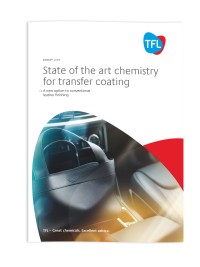 RODA® Line para recubrimientos por transferencia Recientemente, el recubrimiento por transferencia del cuero ha ganado una importancia significativa y está a punto de captar una parte sustancial del mercado actual de acabado. Esta tendencia se debe principalmente a las ventajas tecnológicas que ofrece la tecnología de recubrimiento por transferencia RODA® Line de TFL.
RODA® Line para recubrimientos por transferencia Recientemente, el recubrimiento por transferencia del cuero ha ganado una importancia significativa y está a punto de captar una parte sustancial del mercado actual de acabado. Esta tendencia se debe principalmente a las ventajas tecnológicas que ofrece la tecnología de recubrimiento por transferencia RODA® Line de TFL.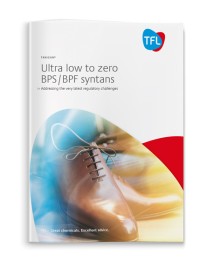
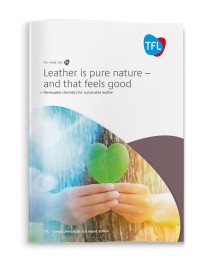
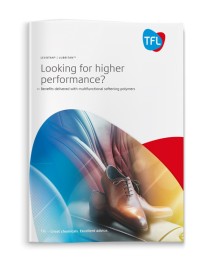
 Nuestra compañía TFL es una empresa que opera a nivel mundial que produce productos químicos especiales para la industria del cuero e industrias relacionadas. TFL ofrece sus productos y soluciones innovadores a curtiembres, empresas de procesamiento de cuero y coaters, siempre esforzándose por introducir ideasnuevas en el mercado.
Nuestra compañía TFL es una empresa que opera a nivel mundial que produce productos químicos especiales para la industria del cuero e industrias relacionadas. TFL ofrece sus productos y soluciones innovadores a curtiembres, empresas de procesamiento de cuero y coaters, siempre esforzándose por introducir ideasnuevas en el mercado.



